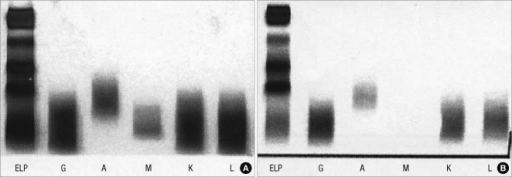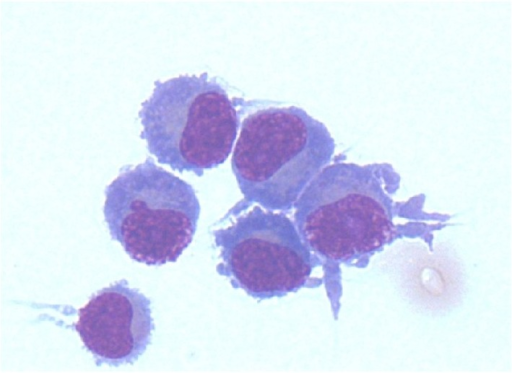Waldenström's macroglobulinemia electrophoresis and immunofixation
|
Waldenström's macroglobulinemia Microchapters |
|
Differentiating Waldenström's macroglobulinemia from other Diseases |
|---|
|
Diagnosis |
|
Treatment |
|
Case Studies |
|
Waldenström's macroglobulinemia electrophoresis and immunofixation On the Web |
|
American Roentgen Ray Society Images of Waldenström's macroglobulinemia electrophoresis and immunofixation |
|
FDA on Waldenström's macroglobulinemia electrophoresis and immunofixation |
|
CDC on Waldenström's macroglobulinemia electrophoresis and immunofixation |
|
Waldenström's macroglobulinemia electrophoresis and immunofixation in the news |
|
Blogs on Waldenström's macroglobulinemia electrophoresis and immunofixation |
|
Directions to Hospitals Treating Waldenström's macroglobulinemia |
Editor-In-Chief: C. Michael Gibson, M.S., M.D. [1]; Associate Editor(s)-in-Chief: Sara Mohsin, M.D.[2] Roukoz A. Karam, M.D.[3]
Overview
Serum protein electrophoresis and immunofixation are important for the diagnosis of Waldenström's macroglobulinemia and shows sharp, narrow spike and dense band of monoclonal IgM paraprotein. CSF flow cytometry, protein electrophoresis and immunofixation are done for the diagnosis of Bing-Neel syndrome and shows a lambda light chain-restricted population of B-cells consistent with a CD5+ CD10+ B-cell lymphoma.
Electrophoresis and Immunofixation
- Serum protein electrophoresis is important for the diagnosis of Waldenström's macroglobulinemia.
- Findings on an electrophoresis diagnostic of Waldenström's macroglobulinemia include:[1]
- Sharp, narrow spike of monoclonal IgM protein
- Dense band of monoclonal IgM protein
- The paraprotein can be of any size
- Serum immunofixation is important for the diagnosis of Waldenström's macroglobulinemia. It helps in confirming the presence of a monoclonal protein, in addition to determining its type.[1]
 |
CSF flow cytometry, protein electrophoresis and immunofixation for diagnosis of Bing-Neel syndrome
- For diagnosing Bing-Neel syndrome, after lumbar puncture, CSF flow cytometry is done which shows a lambda light chain-restricted population of B-cells consistent with a CD5+ CD10+ B-cell lymphoma.
- Furthermore, protein electrophoresis and immunofixation should be done for the detection and classification of a monoclonal protein as well as molecular diagnostic testing for immunoglobulin gene rearrangement and mutated MYD88.[2][3][4]
 |
 |
References
- ↑ 1.0 1.1 Riches PG, Sheldon J, Smith AM, Hobbs JR (1991). "Overestimation of monoclonal immunoglobulin by immunochemical methods". Ann Clin Biochem. 28 ( Pt 3): 253–9. doi:10.1177/000456329102800310. PMID 1872571.
- ↑ O'Neil DS, Francescone MA, Khan K, Bachir A, O'Connor OA, Sawas A (2018). "A Case of Bing-Neel Syndrome Successfully Treated with Ibrutinib". Case Rep Hematol. 2018: 8573105. doi:10.1155/2018/8573105. PMC 6136466. PMID 30228918.
- ↑ Minnema MC, Kimby E, D'Sa S, Fornecker LM, Poulain S, Snijders TJ; et al. (2017). "Guideline for the diagnosis, treatment and response criteria for Bing-Neel syndrome". Haematologica. 102 (1): 43–51. doi:10.3324/haematol.2016.147728. PMC 5210231. PMID 27758817.
- ↑ Tallant A, Selig D, Wanko SO, Roswarski J (2018). "First-line ibrutinib for Bing-Neel syndrome". BMJ Case Rep. 2018. doi:10.1136/bcr-2018-226102. PMID 30279255.